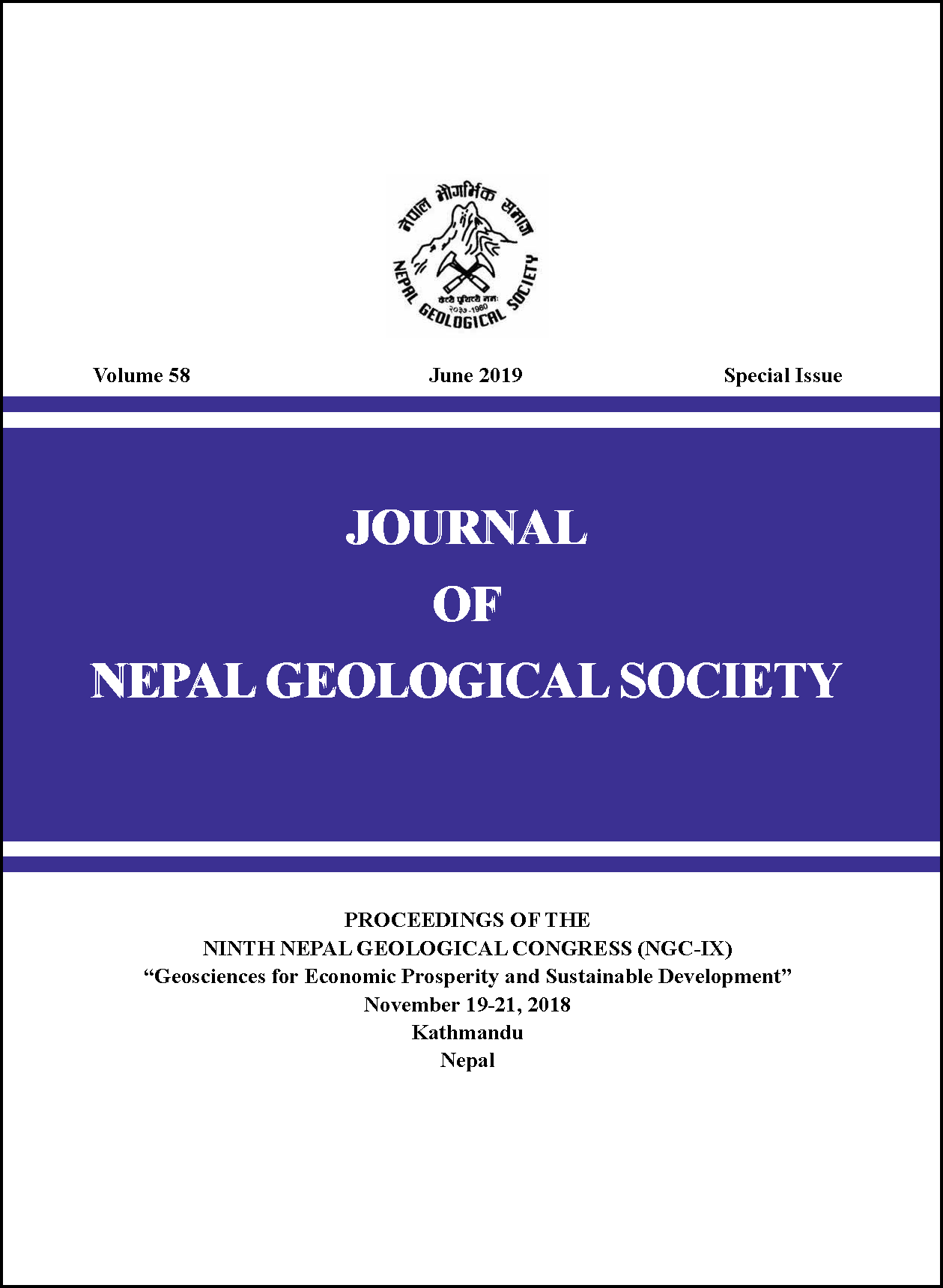Mitigation and Bioengineering Measures for Prevention of the Surbhi Resort Landslide, Mussoorie Hills, Uttarakhand Lesser Himalaya, India
DOI:
https://doi.org/10.3126/jngs.v58i0.24568Keywords:
Mussoorie, Lesser Himalaya, Uttarakhand, India, Mitigation, BioengineeringAbstract
Recent cloud bursts and Glacial Lake Outburst Flood ( GLOF ) in the Uttarakhand Himalaya have triggered catastrophic landslides. Heavy monsoon precipitation lashed Uttarakhand causing devastation and series of new landslides in the region. The Surbhi Resort Landslide is located near the hill station of Mussoorie in Garhwal Himalaya, India, in the Upper Krol Limestone. After intense rain in August 1998, the Krol sedimentary deposits suddenly gave way as a deep-seated landslide, blocking the main Mussoorie-Kemptyartery for 15 days. In 2005, the velocity of the slide was determined to be 4–14 mm/year by previous workers, thus it was still active with a modest intensity. Recently in 2018, during monsoon there was heavy rainfall in the Mussoorie and mud flow in the Kemty Fall area. Huge amounts of quaternary debris are still lying on the slope, another high intensity rainfall or cloud burst in future could trigger another large-scale failure. Based on our recent detailed investigations, following mitigation and bioengineering measures are suggested. To lower the ground water table, a series of horizontal drains should be installed at the base of the crown portion of the slide. This would generate an additional discharge which has to be channeled down Rangaon-ka-Khala, the natural channel, down the slope to the Aglar River flowing in the valley below. To prevent further surface erosion, it is suggested that the Rangaon-ka-Khalamust be bioengineered with shrubs and grasses such as Eriophorum comosum, Saccharum spontanum, Pogonatherum spp. And Wood fordia fruticosa while the surrounding slope must be reforested with Quercus leucotrichophora, Alnus napelensis , Pinus spp.and Cedrus spp. Check dams must be constructed on the entire 3.5 km stretch of the Rangaon-ka-khala to lower the velocity of thewater. This could be done either as gabions or in the form of live fascines of Salix tetrasperma or Dalbergia sissoo. The catchmentarea above the Mussoorie-Kempty road can be expected to collect 60,000 m3 in 24 hours in a 25-years reoccurrence cloud burst. Thus proper drains (0.40 m in dia.) on the inside of the road must be installed. The flow velocity at these extreme events would be 4.8 m/switch is slightly above the recommended value. If this water is allowed to flow down the Rangaon-ka-Khala it will most certainly lead to a major debris slide with a vertical velocity of almost 100 m/s with huge erosive power. For this reason, this discharge should be channeled down in plastic or cement lined pipes, preferably to the west of the Siyagaon Village which is reported as stable rather than in the landslide zone itself. It is concluded that these mitigation measures and bioengineering plantation would certainly help stabilize the Surbhi landslide area to prevent further disaster in future that destroyed the water mills, fields of the surrounding villages and mud flow in popular Kempty Fall area. These measures may also be applicable for the other active landslide zones in the NW(Jammu and Kashmir) and NE ( Darjiling-Sikkim ) Himalaya.
Downloads
Downloads
Published
How to Cite
Issue
Section
License
© Nepal Geological Society




